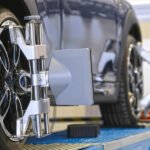

Why Bumpers Are Essential for Cars
Car bumpers, often underestimated, serve a vital role in safeguarding both occupants and the vehicle itself. More than just cosmetic features, these components are essential in providing protection against low-speed collisions and everyday damage. Let’s explore the multifaceted functions of bumpers and their significance in vehicle safety.
Collision Protection:
Bumpers primarily absorb impact energy during low-speed collisions, designed to deform and crumple to minimize damage to the car’s body, headlights, and other vital components. This protection not only reduces repair costs but also enhances passenger safety by safeguarding crucial parts of the vehicle.
Pedestrian Protection:
Modern bumpers are designed with pedestrian safety in mind, featuring energy-absorbing materials and rounded edges to help mitigate injuries in the unfortunate event of an accident involving pedestrians.
Parking Mishaps:
Navigating tight spaces can be tricky, and even the most skilled drivers bump fenders occasionally. Bumpers serve as the first line of defense, absorbing minor scrapes and scratches, preventing expensive bodywork repairs.
Curb Encounters:
Misjudging a curb can easily damage wheels and undercarriage components. Bumpers, strategically positioned at vulnerable points, act as sacrificial barriers, taking the brunt of the impact and shielding vital parts
Aerodynamics:
Some bumper designs subtly contribute to a car’s aerodynamics by efficiently directing airflow, thereby reducing drag and potentially enhancing fuel efficiency.
Styling Element:
Bumpers are integral to a car’s overall design, as their shape, color, and material can enhance the vehicle’s aesthetics, reflecting various stylistic preferences.
Evolution of Bumpers:
Gone are the days of heavy metal bumpers. Modern versions prioritize safety and efficiency. Lightweight materials such as plastic and foam provide energy absorption while keeping weight minimal. Moreover, regulations enforce specific performance standards for bumpers, guaranteeing optimal protection for all.
The Future of Bumpers:
Technological advancements are continuously shaping the automotive landscape. We might see self-healing bumper materials, integration with active safety systems, and even adaptive designs that adjust to different impact scenarios.
Conclusion:
Silently guarding the safety of vehicles and passengers, bumpers are not merely decorative components but practical safety features essential to cars. With technological advancements, bumpers continue to evolve, potentially bringing about a safer and more intelligent driving experience in the future.
Add a comment Cancel reply
Categories
- Car Gadgets (17)
- Car News (33)
- Car Reviews (43)
- Car Wars (7)
- Mechanicals (32)
- Uncategorized (2)
Recent Posts
About us

Popular Tags
Related posts


Essential Car Repair Skills Every Driver Should Know

All About Wheel Balancing








